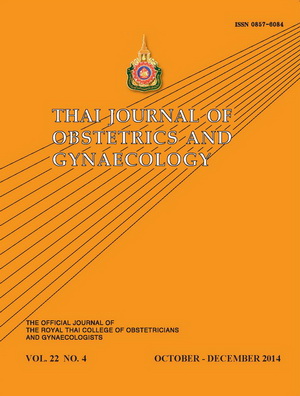The Correlation of Body Mass Index and Waist-Hip Ratio to Insulin Resistance in Reproductive-aged Thai Women with Polycystic Ovary Syndrome
Main Article Content
Abstract
Objective: To compare the correlation of body mass index (BMI) and waist-hip ratio (WHR) to insulin resistance (IR) in reproductive-aged Thai women with polycystic ovary syndrome (PCOS).
Material and methods: A retrospective cross-sectional study was conducted among 205 reproductive-aged women who attended the Gynecologic Endocrinology Unit of the Department of Obstetrics and Gynecology, Siriraj Hospital during July 2005 - December 2010. Reviewed data included age, body weight, height, waist circumference, hip circumference, HOMA-IR.
Results: Among 205 cases of PCOS women, 97 women had IR (47.3%) and 108 women did not have IR (52.7%). By a forward stepwise multiple logistic regression analysis, mean BMI and WHR in IR group were significant higher than non-IR group (P < 0.001). Area under an ROC curve of IR for BMI was 0.9 and for WHR was 0.82. Both BMI and WHR correlate to insulin resistance. In comparison, BMI had better correlation than WHR (P = 0.006).
Conclusion: Reproductive-aged Thai PCOS women with IR had higher BMI and WHR than those who did not have IR. Both BMI and WHR correlate to insulin resistance. BMI correlates better to IR than WHR.


